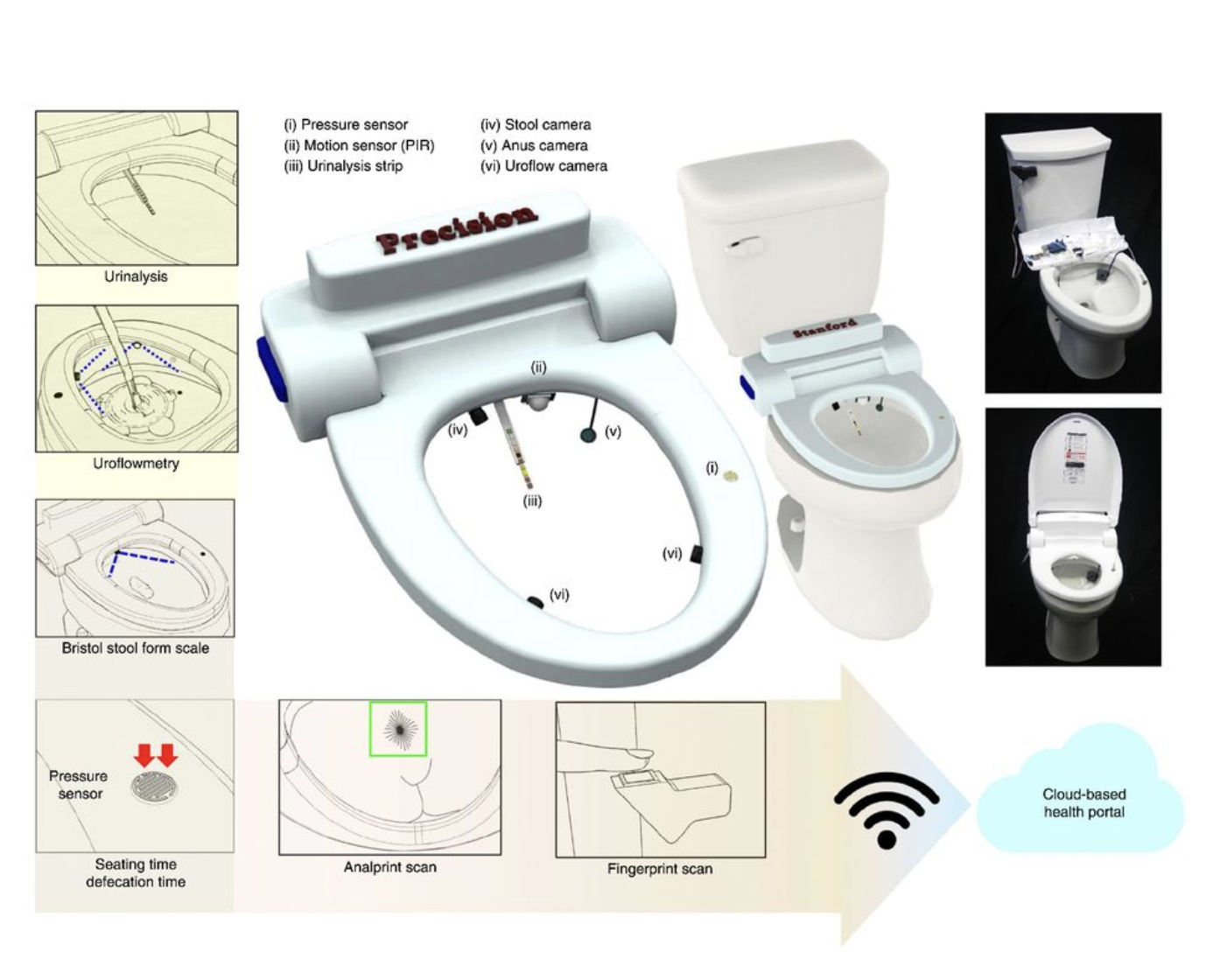A new prototype of a smart toilet can detect disease
Researchers at Stanford University made a prototype of a smart toilet that can identify you by your ‘analprint’ and monitor your trip to the toilet. This toilet has a camera and sensors to collect information on your bodily waste for detecting any health issues you might have.
The idea for analprint was sparked by Salvador Dalí, who discovered that the anus has 35 or 37 creases, which are as unique as fingerprints. The modular prototype device can be attached to most standard toilets. It uses a Raspberry Pi paired with a camera to capture each person’s unique analprint as they sit down to use the toilet to ensure data is associated with the correct person.
Inside the toilet, there are cameras to capture images of the person and their waste, motion sensors to detect urine streams, and medical sensors to analyze what’s inside the excrement. To further distinguish an individual, the smart toilet also includes a fingerprint scanner on the lever.
During the first study, the smart toilet collected urine and stool samples. So, the researchers created an algorithm to determine ‘urodynamics’, which details the flow rate, magnitude, and stream time of each participant’s urine and then compares the data to see if there are any patterns between the bodily waste of healthy and unhealthy bodies. The smart toilet features several modules to measure molecular features in urine, such as white blood cell count and protein levels, which could indicate whether someone has a bladder infection.
Participants’ stool was also classified using the ‘Bristol Stool Form Scale’, which sorts people’s excrement into seven distinctive classes from ‘hard lumps’ to ‘watery’. This is recorded along with the total time the individual defected. The prototype smart toilet can detect things like constipation and infections, but the eventual goal is to spot any severe health problems like colon cancer. After an individual’s trip to the toilet is complete, the data and images collected are then stored in an encrypted cloud server, which is supposed to keep the information private.
The intention of the smart toilet is not to replace doctors or provide an official diagnosis but it is designed to monitor your bodily waste, identify anything out of the ordinary, and send anything suspicious to your doctor to help detect any health issues before they become severe. The research team hopes to have a second prototype functional by the end of the year. Ideally, they want the next prototype to help detect tumor DNA as well as viral RNA to help them track the spread of diseases like the new coronavirus. But that’s a feature that is still on the team’s wish list; it has not been incorporated into the design yet.
The research team is currently focused on adding more participants to the study, creating a new prototype that features more technologies to provide more accurate data, and making it functional for more than male users. Due to the fixed camera angles of the GoPro, the smart toilet would film female genitalia in addition to the anal region, which is why the first study included an all-male participant pool.
Since the smart toilet is built as an add-on to a standard toilet, the technology could cost anywhere from $300 to $600 when it is eventually manufactured.
The idea of a toilet like this is nothing new, and it has been discussed by the medical field for many years. However, this incarnation poses obvious risks to one’s privacy. The research team conducted a survey distributed to residents in the Bay Area and found that participants who own smart home devices like Amazon’s Alexa are significantly more favorable to having a smart toilet in their home. But there’s still a big jump from a smart toilet that can light up and play music and a toilet that knows you by your analprint.
Source theverge.com

